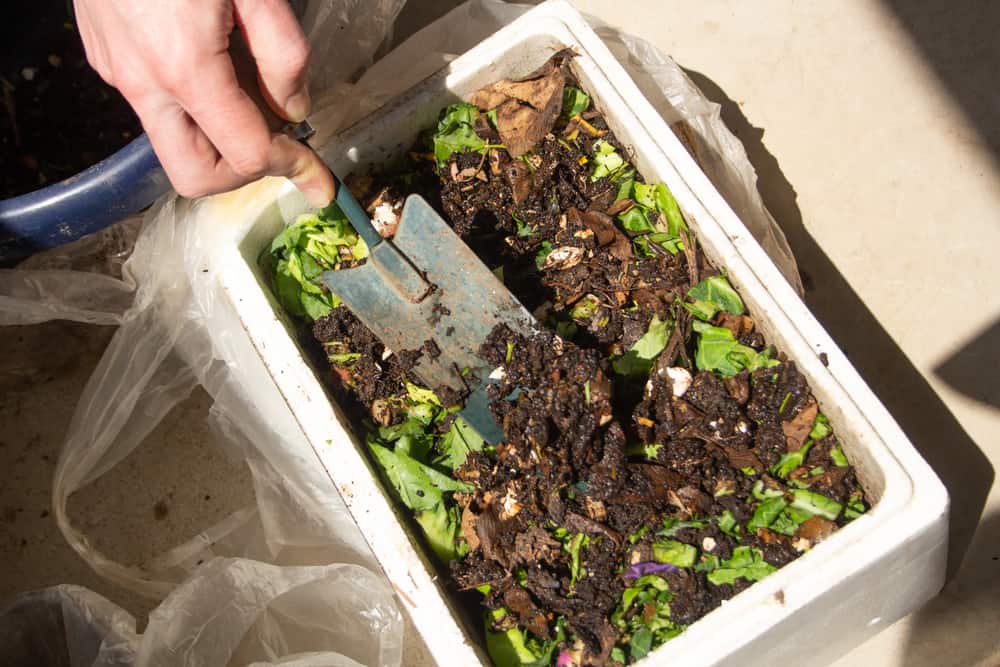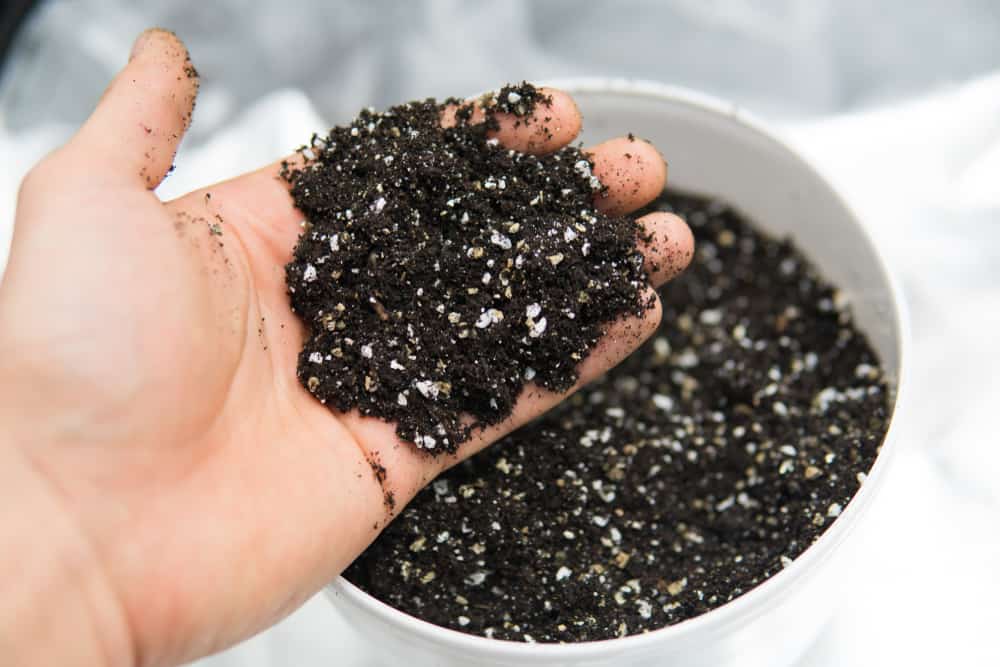Gardening
We have all seen the little specks of white dust scattered in potting soil and wondered why it is there. Does it have a purpose; how does it help the soil?
The substance in potting soil is probably perlite and not Styrofoam. Perlite helps potting soil with aeration and moisture retainment. It is commonly used as an additive to keep the soil loose and light while also retaining water, so the soil remains hydrated for longer.
These materials or substances are meant to improve the condition of the soil and are referred to as soil conditioners. Let’s look at exactly how they help our gardens.
Why Perlite and Not Styrofoam?
Perlite is a type of porous volcanic glass particulate that has high water content. It is commonly used to keep your soil loose and aerated, as established above. It also holds water in small quantities on its surface because it is porous.
Perlite, unlike Styrofoam, decomposes over time and does not pose an environmental threat. On the other hand, Styrofoam is made from a petroleum product named styrene and does not degrade or break down over time, making it extremely hazardous to the environment and potentially your plants.
How do you know whether you have perlite of Styrofoam in your potting soil?
There are multiple ways to determine whether you have Perlite or Styrofoam in your potting soil. One method is to simply pick up the perlite or Styrofoam and pinch it between your thumb and forefinger.
If the material is soft and squeezable, you are most likely dealing with Styrofoam. If the material is hard and brittle, you have perlite in your hands. Another method is to pour your soil into a bucket of water.
Styrofoam will float because of its petroleum-based molecular composition. Perlite will sink as it is a mineral. If the Styrofoam dissipates or dissolves in the water, it should not be used as your plants will absorb it and most likely wither and die.
What are the alternatives to Styrofoam and how should it be used?
We have determined that Styrofoam is bad for the environment and not really conducive to growing your own little Garden of Eden, but are there alternatives? Fortunately, yes, there are many alternate soil conditioners even besides perlite. The other alternative or substitutes might even be found in your garden, depending on where you live.
This also depends on what you are planning to plant in your garden. Why? Every alternative to Styrofoam has its perks, cons, and conditions to which they should be used to ensure healthy green plants. Chief amongst these conditions are PH levels. Don’t worry; it’s not complicated.
Generally, depending on the species of plants, different plants like soil with either a high, medium or low level of acidity. All this means is that you have to make sure that whatever you are mixing into your soil adds the right amount of acidity or alkalinity to accommodate your plants.
- Vermiculate is probably one of the best-known alternatives because it is very similar to perlite. Vermiculate is also lightweight, PH neutral, and does not deteriorate or decompose. It has a higher absorbency rate than perlite and is an ideal medium for the germination of seeds. However, vermiculate has been found to cause poisoning in pets and small animals if not handled properly, so please follow the instructions and precautions carefully before using it.
- Coarse sand is easier to find and a great substitute. Yes, I know how it sounds, but coarse sand is actually a very good alternative to Styrofoam. The coarseness of the sand should be around 1.5-2mm per grain. This will enable the soil mix to aerate and facilitate draining better. Sand is also PH neutral, nutrient-free, and absorbs water without retaining it. Bear in mind that sand is quite a lot heavier than Styrofoam or many of the alternatives.
- Coir or coconut fibers are made from the husks of…you guessed it, coconuts. These fibers are growing in popularity among gardeners and farmers as Coir is more sustainable and has higher water retention. This makes it the ideal medium for plants that require moist soils. Coir also has the ability to retain nutrients and release them into the soil. Coir is acidic, so be conscious of what you are planning to plant in it.
- Peat or more uncommonly known as sphagnum moss, has high water retention and is similar in texture to Coir. Due to its fibrous texture, it keeps the soil loose and aerated while retaining nutrients and minerals. Peat is also low PH making it ideal for growing plants that prefer acidic soil, like tomatoes and blueberries.
- Pine Bark in particular is one of the main ingredients in a commercial soil mix that is widely available at any garden center or your local nursery. Depending on the bark pieces’ size mixed into your pottery, the soil assists with water drainage, prevents soil from compacting, and slowly releases nutrients into the soil. Unlike Styrofoam, Pine Bark has an acidic PH like Peat, which means it should not be used for better plants to a neutral or alkaline PH level.
- Pumice is also a type of porous rock particle that is produced during volcanic eruptions. It is denser and heavier than Styrofoam, more closely related to Perlite in composition. It has a very high nutrient and mineral content. The PH is neutral, and the fact that it keeps your soil loose and aerated makes this one of the best alternatives. Unfortunately, Pumice is more expensive than Styrofoam and very difficult to find even in nurseries or garden centers.

What can I use Styrofoam for in my Garden?
As we discussed above, Styrofoam should not be used in conjunction with soil or a soil conditioner. Meaning it should not be mixed with soil to achieve drainage, aeration, or any kind of nutritional function. Although Styrofoam cannot be used as an aerator for your soil, it does have other properties that can be used in your garden. This depends, of course, on in what shape and form you have it available.
Styrofoam cups can be used as germination containers. Because of the insulative properties, it protects against harsh temperatures and minimalizes evaporation. To start, simply fill a Styrofoam cup halfway with potting soil, cotton, or even those Coconut fibers we were talking about, and make sure that your seedling medium is in direct sunlight and that it is damp.
Place your choice of plants, herbs, or flowers in the medium. And after 2-3 days, depending on what seed you planted, you will see a sprout. These cups have the added advantage of being customizable to your gardening esthetics. You can also write the name of the seeds you are germinating to make sure you don’t forget what you planted.
Styrofoam coolers are the ideal potting. They are lightweight, relatively cheap, and easy to come by. Making a pot for your plant could not be easier. Perforate or poke small openings on the bottom of the container, line it with hessian or burlap, and fill it with your choice of soil and soil conditioner.
The holes on the bottom of the container will ensure that water drains properly from your pot and do not result in root rot. Simply plant your chosen seeds, or if used the Styrofoam cups, transplant your seedlings from your cup into your Styrofoam cooler pot. Depending on the size, you should be able to fit multiple seedlings into your new pot.
Depending on where you live and the contents of your garden, you might have to weather some harsh winters. And along with you your plants. Styrofoam cones or sheets can respectively be used to protect your roses or shrubberies from the cold. This however is only effective under certain circumstances.
For instance, Styrofoam cones or cups will not protect your roses from snow or subzero temperatures. They will, however, protect your roses from winds and mildly cold weather. Styrofoam sheets can be lashed together and shaped over a shrub to form a tent or teepee that will protect it from moderate cold weather.
Although some gardeners advocate using Styrofoam peanuts in your potting soil, this is a very bad idea as the Styrofoam might be toxic to your plants. Others use Styrofoam as a filler for large containers to help stop wasting potting soil; however, if placed incorrectly without a mesh screen, Styrofoam might actually cause the roots of your plants to rot.
Closing Thoughts
Styrofoam is a wonderful product to use in your home, for parties, and sometimes even to germinate your seeds. Its lightweight, durable and can stand the test of time. However, Styrofoam is also non-biodegradable, as discussed above, and should never be mixed with soil or discarded anywhere except a recycling plant.
